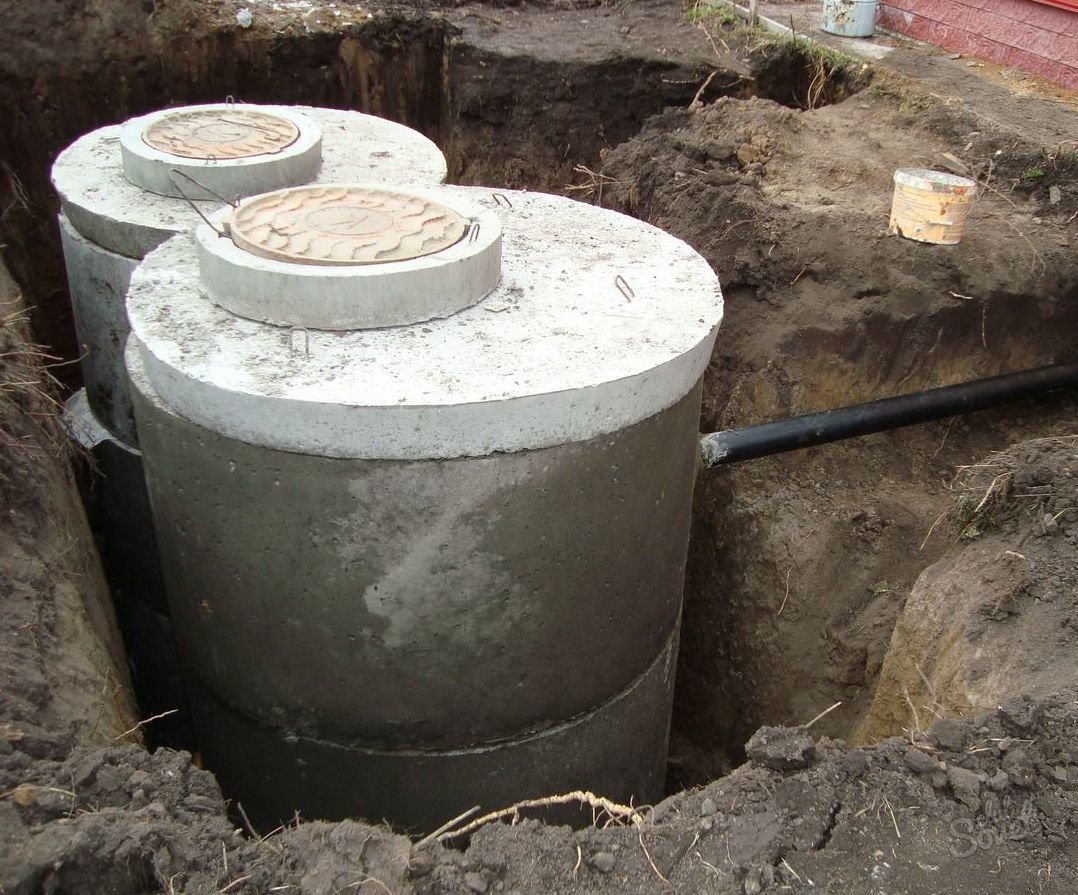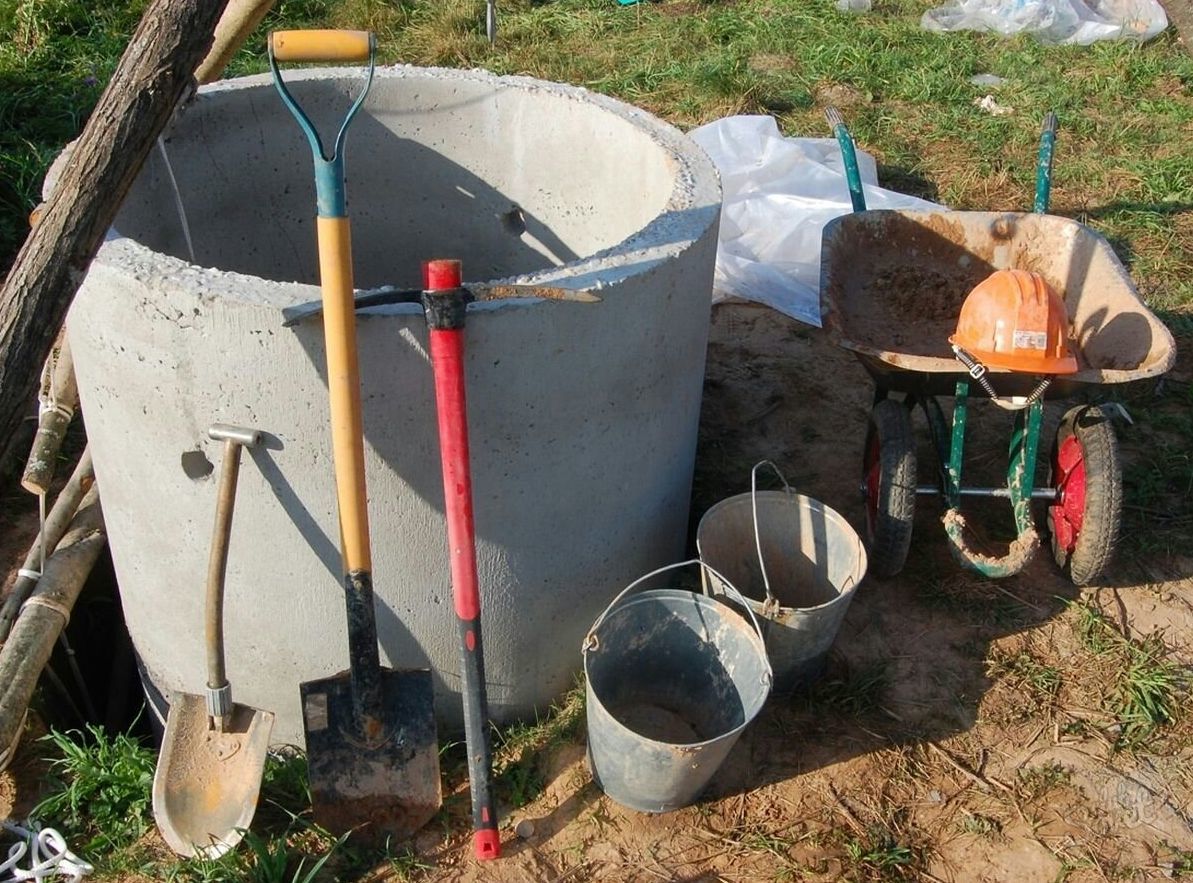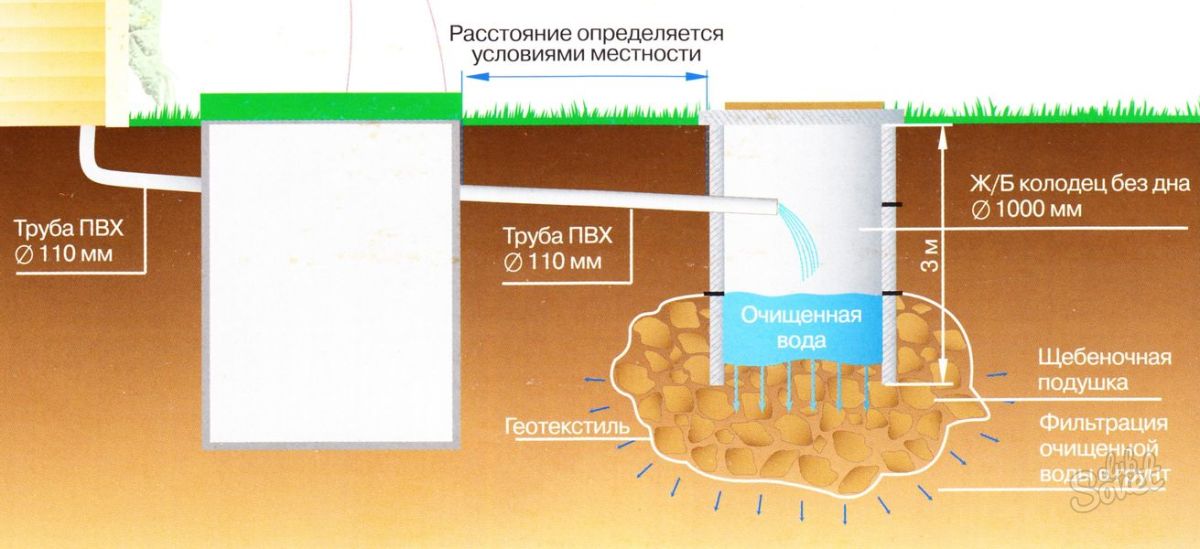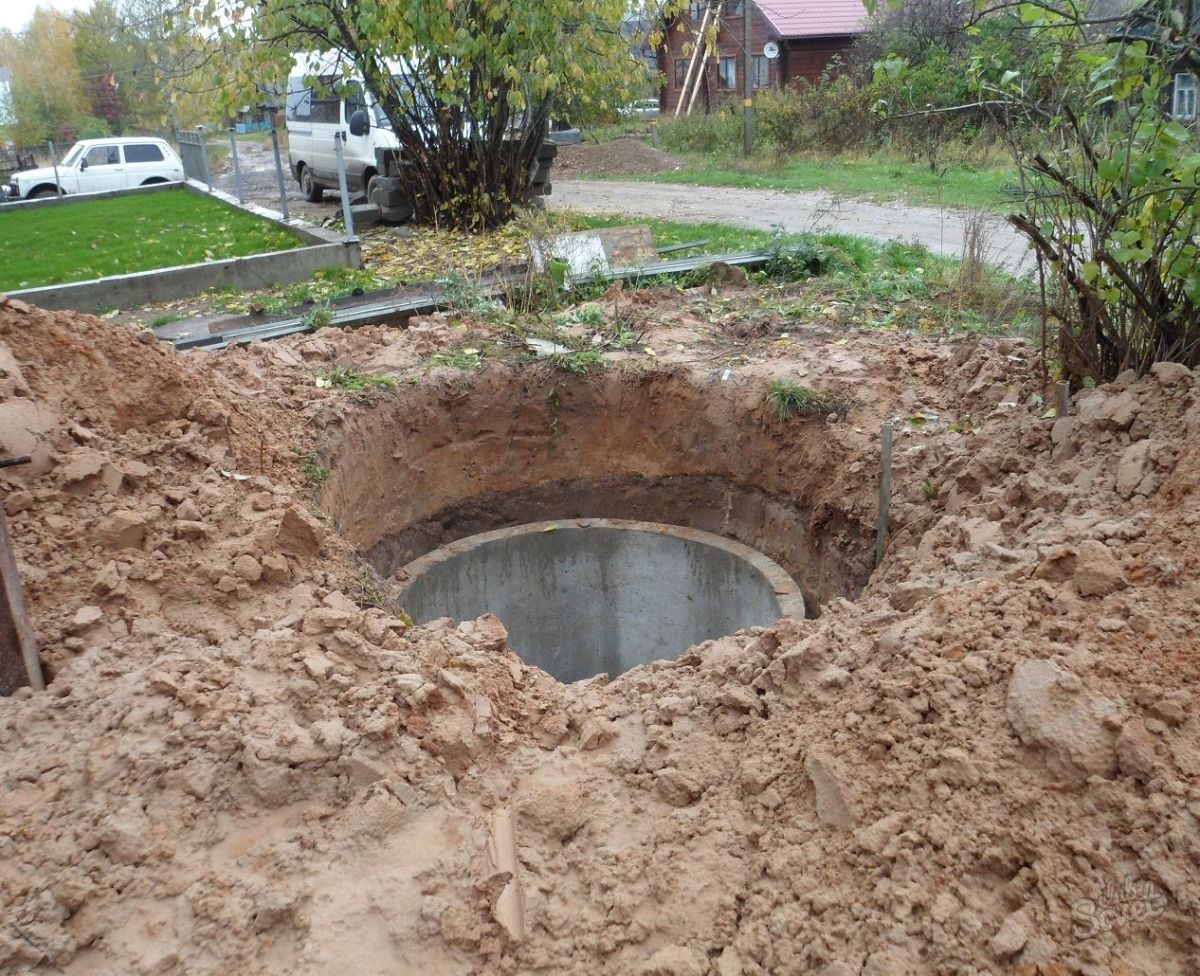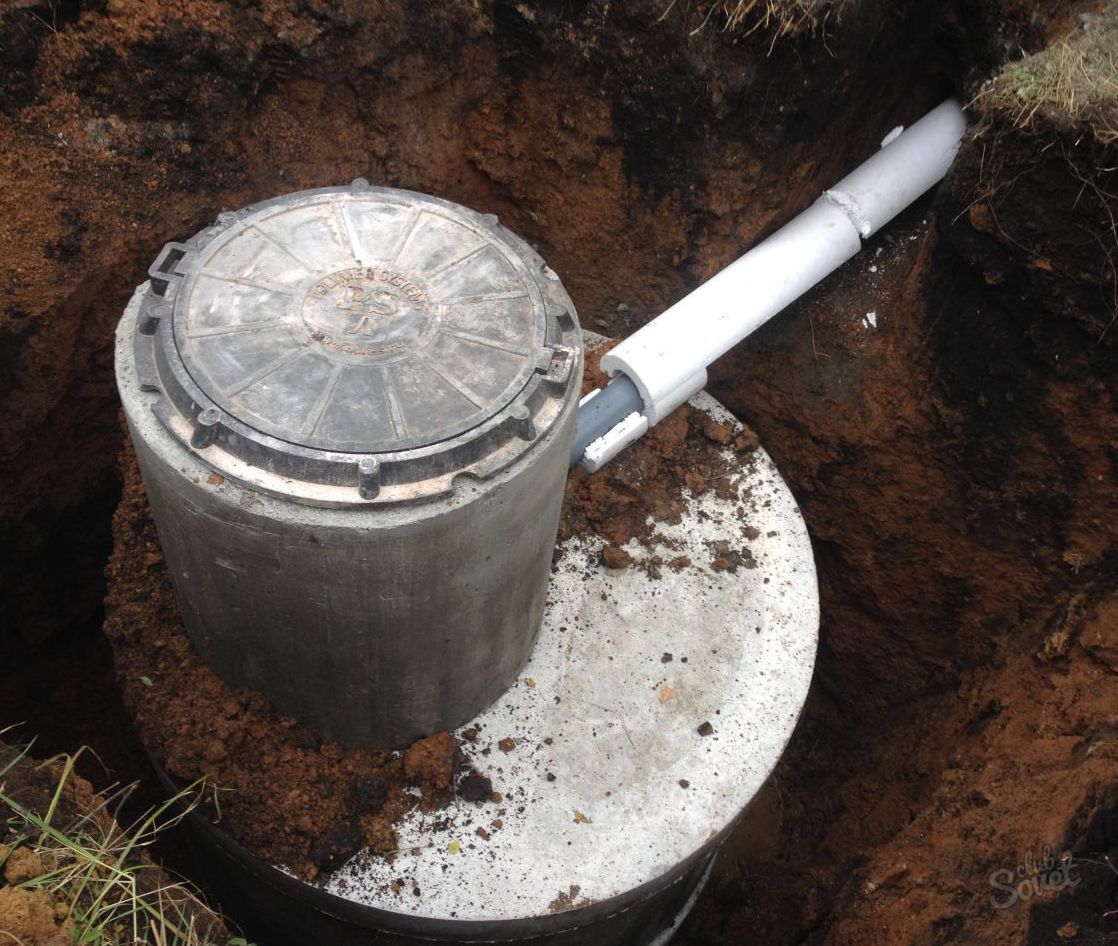A homemade septic tank based on ready-made reinforced concrete links is a good alternative to expensive equipment of industrial manufacture. Consider in detail this popular way to solve the problem of dismissal disposal.
Septic configuration selection
With their own hands, one of the three options for concrete septica is built:
- Single-chamber sump is suitable for cottages with seasonal accommodation of a small number of people. Inexpensive in terms of initial investments, it will later require periodic costs to call a pumping machine.
- A two-chamber septic tank is a more advanced option that gives minimal cleaning. The first container serves to settle the heavy fractions, and through the second chamber, the stretched water goes into the ground through the drainage layer of gravel.
- The full-fledged septic system is considered a three-chamber septic, consisting of two sumps and a drainage well. Purification of the effluent comes to 80-90%, and in general this installation is much longer without the need for maintenance.
Calculation of septic parameters
When designing a local septicity, the following points take into account:
- The volume of each chamber depends on the number of tenants and is determined by the formula: V \u003d 200 x 3 x N / 1000, where N is the number of people, 200 - the daily water consumption by one person, 3 days - the period of processing period, 1000 - the coefficient for translating the volume in m³.
- Sauna or pool Also taken into account when calculating the volume of cameras.
- The level of groundwater should be deeper than 2-3 meters, otherwise you will need the ideal sealing of the design and the use of drainage pumps.
- When booking the sewer pipes above the depth of the soil freezing, their insulation will be required.
After selecting the type of septicism and determining the volume of chambers, the desired amount of reinforced concrete rings and sewer hatches are calculated.
Select location
Minimum distances from septicity to the object:
- 5 m - to the foundation of the house.
- 1 m - to non-residential buildings.
- 50 m - to drinking wells and wells.
It is not recommended to have a septic tank in lowlands due to the possibility of flooding with rainwater. Wastewater pumping implies a driving path for heavy equipment. Sewer lines should pass without bends and with a necessary slope for self-moving fluid movement.
Preparation of Kotlovana
When using the excavator, it is satisfied with the total pit, distributing the chambers after 1 m. If there is no possibility to apply construction techniques, then the pits are digging separately by making them 20 cm wider concrete rings.
The order of earthworks:
- Place the ring at the selected place.
- Take out the land from the concrete circle - first in the middle, then at the edges.
- When the first ring will plunge into the ground, rolled up and put the following.
- As the ground is deepened, the land is starting to remove a bucket, pulling on the rope assistant.
Camera construction
The bottom of the sumps concrete, and the kershes of the rings are smeared with mortar. In the walls using a perforator or a grinder make holes for lining the sewer. After laying the drain lines of the joints of the compounds close up with cement. For complete tightness, it is desirable to wipe all seams with bitumen mastic. At the bottom of the last well organize a filter consisting of sand and rubble, covered with layers with a thickness of 20-30 cm. The tanks are coated with concrete lids with holes for revision hatches. The final stage is the back of the exterior space of sand.
When operating, special bacteria for septic tanks are added to sumps, which improve the process of recycling uncleanness.











